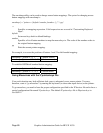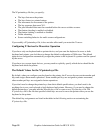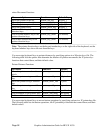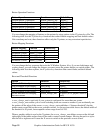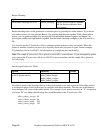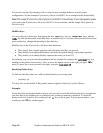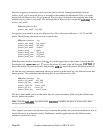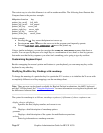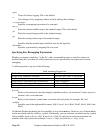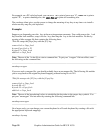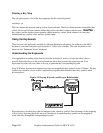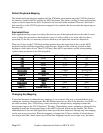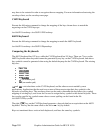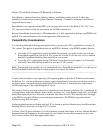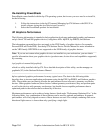
The easiest way to solve this dilemma is to call in another modifier. The following lines illustrate this.
Compare them to the previous example.
###pointer function key
pointer_key_mod1 left_shift
pointer_key_mod2 left_extend
pointer_left_key cursor_left
pointer_right_key cursor_right
pointer_up_key cursor_up
pointer_down_key cursor_down
In this example,
• Pressing the
key moves the hpterm text cursor up.
• Pressing
moves the cursor up in the program you frequently operate.
• Pressing
moves the pointer up.
Using a similar technique, you can also reassign the
sequence that aborts a
session. You can specify the press of a single key or a combination of two, three, or four key presses.
Just make sure that the key sequence you select isn't something you're going to type by accident.
Customizing Keyboard Input
Besides remapping the mouse's pointer and buttons to your keyboard, you can remap any key on the
keyboard to any other key.
Modifying Modifier Key Bindings with xmodmap
To change the meaning of a particular key for a particular X11 session, or to initialize the X server with
a completely different set of key mappings, use the xmodmap client.
____________________________________________________________________________________
Note: There are now two keyboards available for Hewlett-Packard workstations, the 46021 keyboard,
and the C1429 keyboard. See "
Using the Keyboards" for more information on using these keyboards and
the differences between them.
____________________________________________________________________________________
The syntax for xmodmap is as follows: xmodmap <options> [<filename>] where <options> are:
-display <host>:<display>
Specifies the host, display number, and screen to use.
-help
Displays a brief description of xmodmap options.
-grammar
Displays a brief description of the syntax for modification expressions.
-verbose
Prints log information as xmodmap executes.
Graphics Administration Guide for HP-UX 10.20
Page 97



